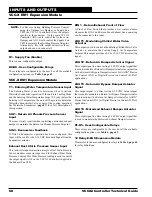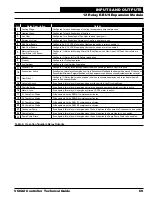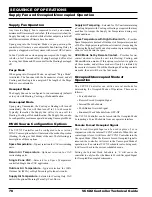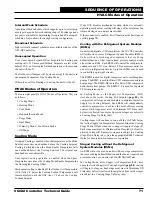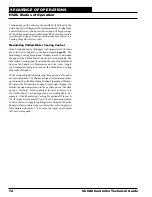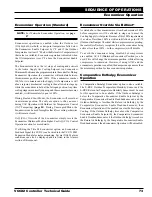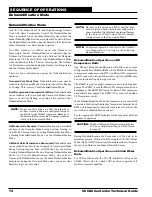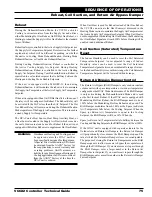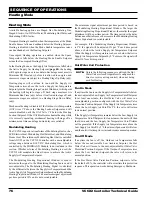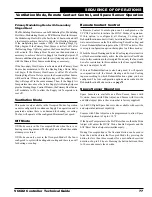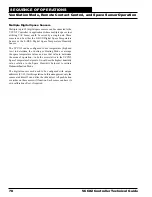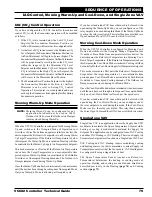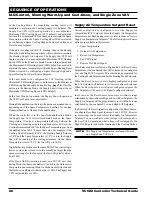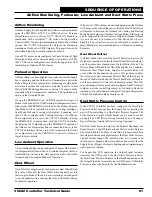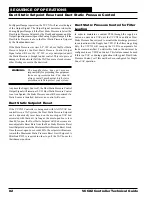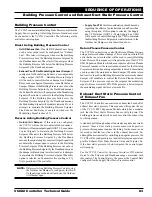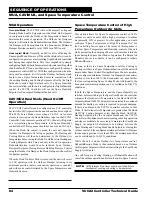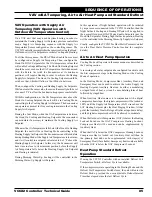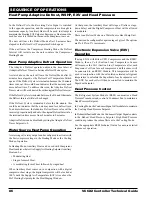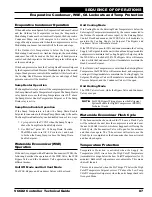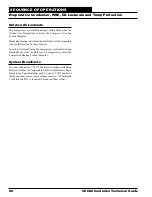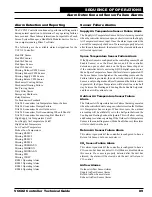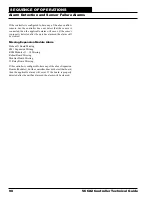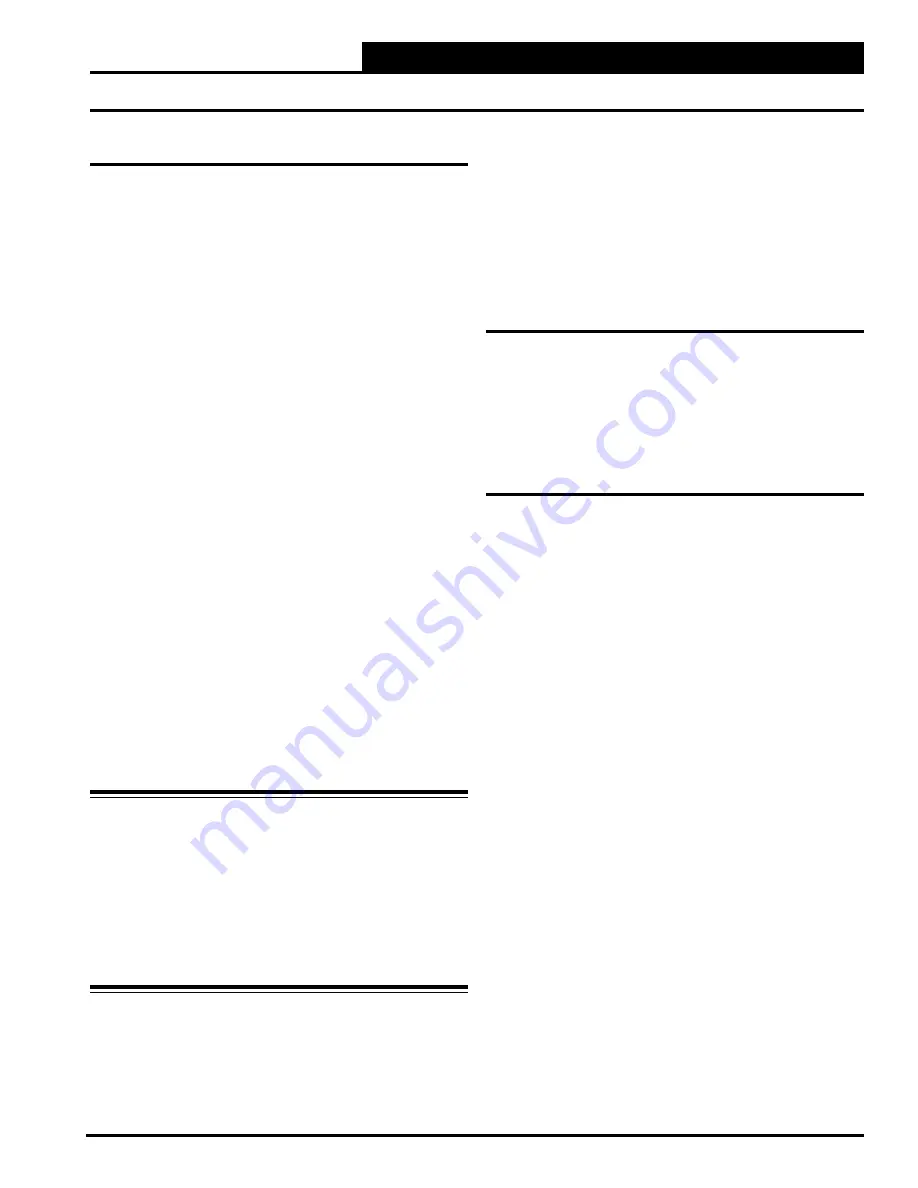
75
VCCX2 Controller Technical Guide
Reheat
During the Dehumidification Mode, the VCCX2 activates
Cooling to extract moisture from the Supply Air and utilizes
either Modulating Hot Gas Reheat, On/Off Hot Gas Reheat, or
Heating to reheat the Supply Air. Hot Gas Reheat is the standard
form of Reheat.
Reheat is always controlled to the Active Supply Air Setpoint (see
the Supply Air Temperature Setpoint Reset section for further
explanation) which will be different depending on whether
the unit is in Cooling Mode Dehumidification, Heating Mode
Dehumidification, or Vent Mode Dehumidification.
During Cooling Dehumidification, Reheat is controlled to
the Active Cooling Supply Air Setpoint. During Heating
Dehumidification, Reheat is controlled to the Active Heating
Supply Air Setpoint. During Vent Dehumidification, Reheat is
controlled to a calculated setpoint that is halfway between the
Heating and Cooling Mode Enable Setpoints.
If the unit is equipped with a MHGRV-X, then during
Dehumidification, it will modulate the reheat valve to maintain
the Supply Air Temperature at the Active Supply Air Temperature
Setpoint.
If the unit is equipped with an On/Off Hot Gas Valve, then one of
the relays will be configured for Reheat. The Reheat Relay will
be activated if the SAT is less than the SAT Setpoint. The Hot
Gas Reheat Relay will remain on during the Dehumidification
Mode regardless of the Supply Air Temperature. This is to ensure
a steady Supply Air Temperature.
The HVAC unit’s Heat Source, Heat Pump Auxiliary Heat, or
a Heat Source located in the Supply Air Duct (which is used as
the unit’s Heat source) can be used for Reheat if the unit is not
equipped with Hot Gas Reheat or to supplement Hot Gas Reheat.
WARNING:
Simultaneous Heating and Cooling cannot
be approved unless the HVAC unit has
been specifically designed for this purpose.
A Special Price Authorization (SPA) must
be obtained from the AAON
®
factory for
these applications to avoid warranty and/
or rating problems. AAON assumes no
liability for any Simultaneous Heating and
Cooling application if a SPA is not obtained
from the AAON
®
Factory at the time the
HVAC unit is ordered.
When Unit Heat is used for Reheat instead of Hot Gas Reheat,
the VCCX2 can activate the Heat Source(s) discussed in the
Heating Mode section to maintain the Supply Air Temperature at
the Active Supply Air Temperature Setpoint. When Unit Heat is
used to supplement Modulating Hot Gas Reheat, the Modulating
Hot Gas Reheat Signal must reach 100% before Heating will be
enabled to add additional Reheat.
Coil Suction (Saturated) Temperature
Reset
The Indoor Humidity can be used to reset the Coil Saturated
Temperature Setpoint. A user adjustable range of Indoor
Humidity values can be used to reset the Coil Saturated
Temperature Setpoint between a user adjustable range of values.
As the Indoor Humidity rises within its range the Coil Saturated
Temperature Setpoint will be lowered within its range.
Return Air Bypass Damper Control
The Return Air Bypass (RAB) Damper is only used on constant
volume units with space temperature or return air temperature
configured as the HVAC Mode Enable sensor. The RAB Damper
is only active during the Dehumidification Mode and is used
as the first form of Reheat. If the HVAC unit is equipped with
Modulating Hot Gas Reheat, the RAB Damper needs to be at
100% before the Modulating Hot Gas Reheat can be used. The
RAB Damper modulates from 0-100% as the Space (or Return
Air) Temperature falls below the Cooling Setpoint. When the
Space (or Return Air) Temperature is equal to the Cooling
Setpoint, the RAB Damper will be at 0%. When the
Space (or Return Air) Temperature falls to halfway between the
Cooling and Heating Setpoints, the RAB Damper will be at 100%.
If the HVAC unit is equipped with separate actuators for the
Outdoor Air and Return Air Dampers, the Return Air Damper
will proportionally close more as the RAB Damper opens. The
rate at which the Return Air Damper closes is user-adjustable.
The purpose of closing the Return Air Damper more as the RAB
Damper opens is to allow more air to bypass the evaporator coil
through the RAB Damper. If you want more air to pass through
the RAB Damper, enter a larger number in the Return Air
Damper Factor Setpoint. If you want less air to pass through the
RAB Damper, enter a smaller number in the Return Air Damper
Factor Setpoint.
SEQUENCE OF OPERATIONS
Reheat, Coil Suction, and Return Air Bypass Damper








